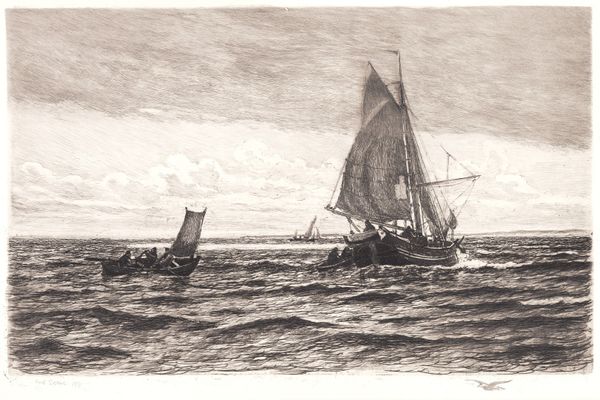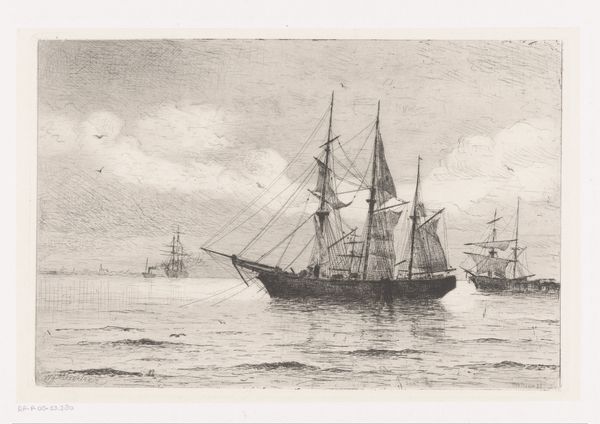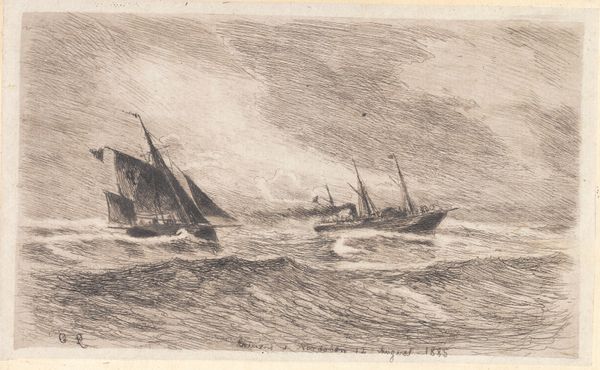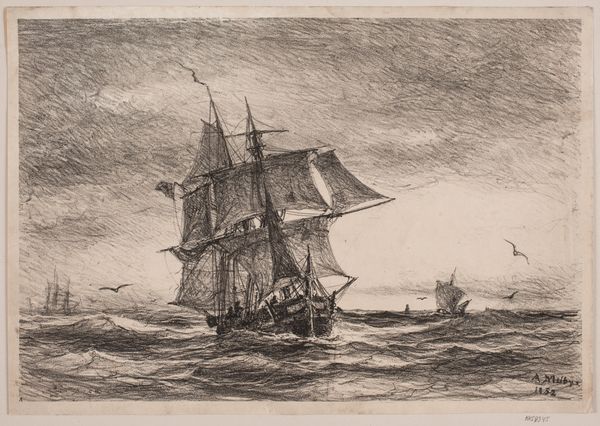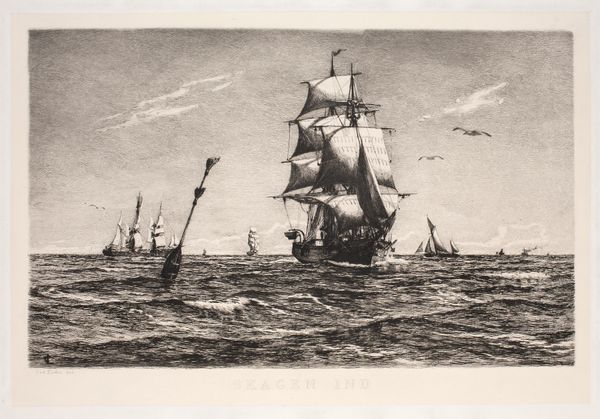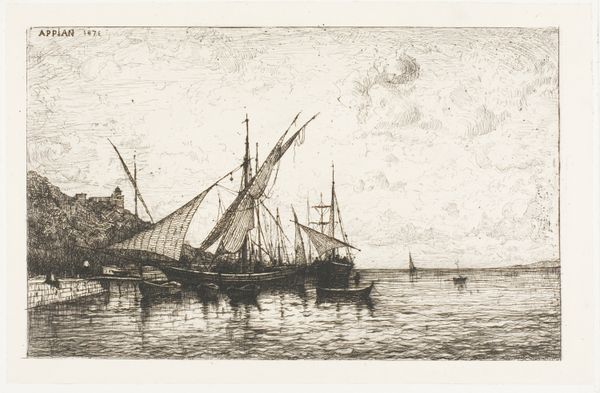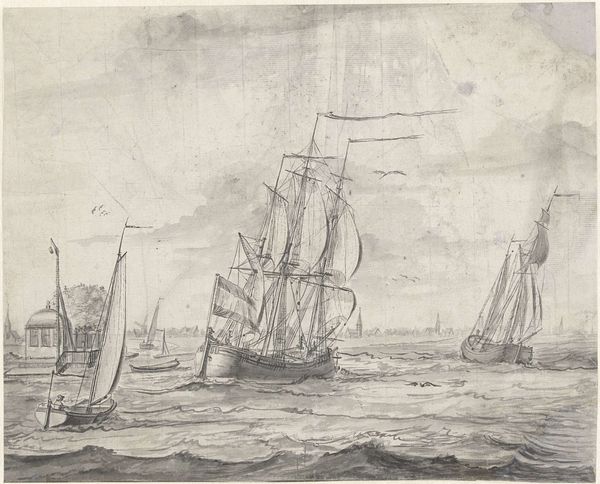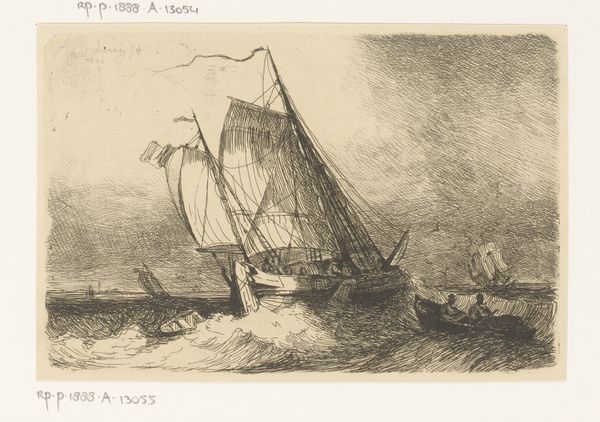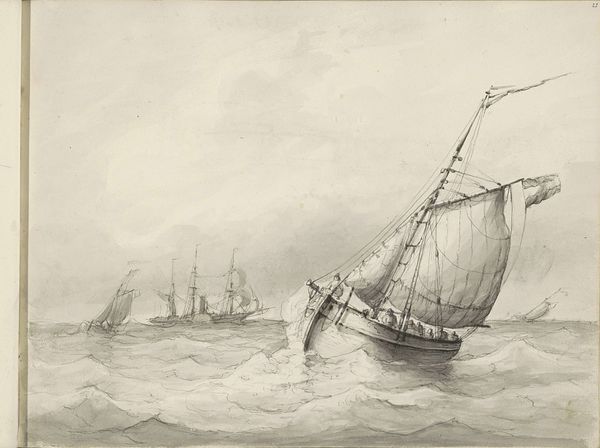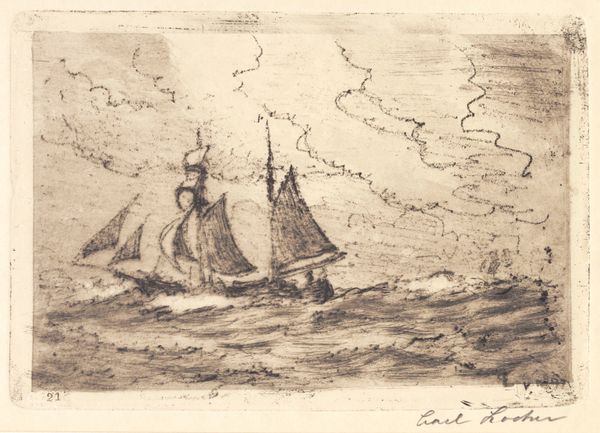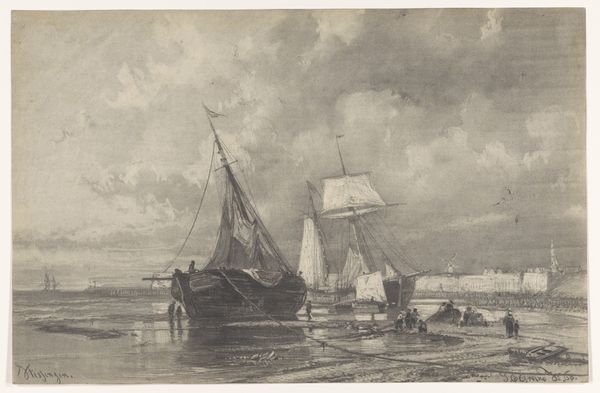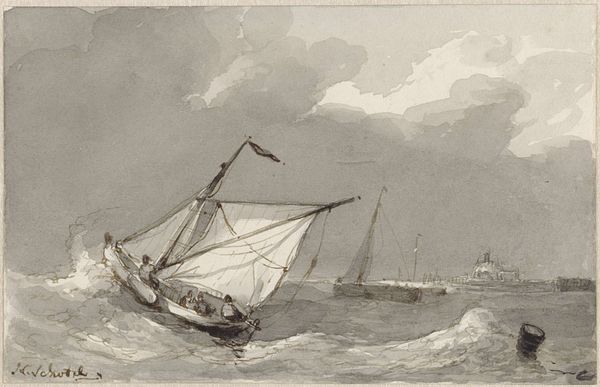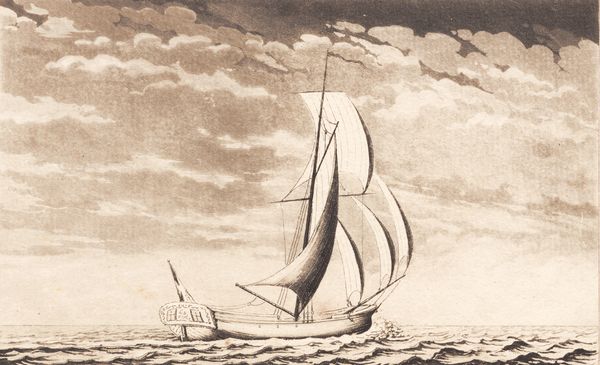
Dimensions: 112 mm (height) x 150 mm (width) (plademaal), 98 mm (height) x 137 mm (width) (billedmaal)
Editor: Here we have Carl Locher’s “Fresh Breeze in the Sound,” an etching from 1892. It depicts a series of ships battling some choppy waves. It feels quite… unsettled to me. What do you see in this piece, especially considering its historical context? Curator: Well, immediately I see a piece that's intensely invested in the public perception of maritime life. The late 19th century witnessed a surge in industrialization and urbanization, even in Denmark. Artists like Locher were, consciously or unconsciously, reacting to those shifts. This etching romanticizes a life tied to the sea. Note the level of detail applied to the waves. Locher isn't just depicting water; he's crafting a specific visual language, connecting with a yearning for simpler times. Do you think this resonates with a national identity? Editor: It definitely feels very specific. Was the image designed as something that could be mass produced, or for display in galleries? Curator: An excellent question. Considering it’s an etching, designed for printmaking, this artwork likely served a dual purpose. On one hand, it could be displayed, but prints also became accessible images, sold or published in journals, and played an important role in shaping public imagination, almost like a propaganda of idyllic times gone by. In that sense, this small etching actually bears an enormous cultural and political weight. Editor: That is quite a heavy burden! I never considered how a print could perform on so many social and political levels. Thanks! Curator: And thank you. Considering art within this social infrastructure reveals hidden narratives. A great reminder for us both.
Comments
No comments
Be the first to comment and join the conversation on the ultimate creative platform.
